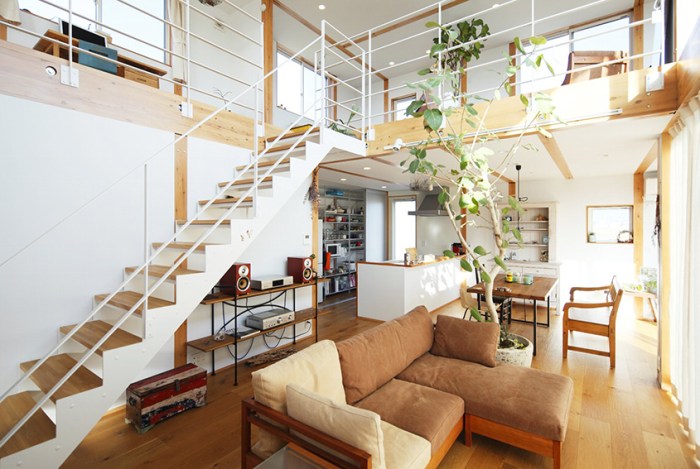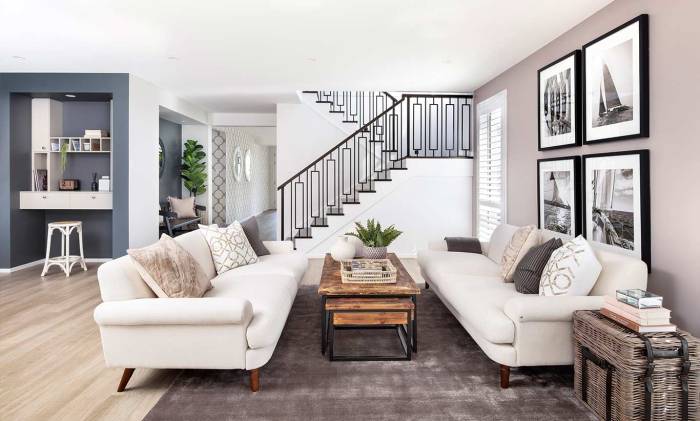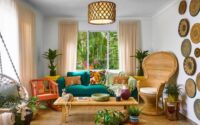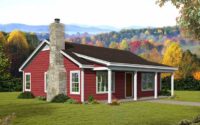2 Story House Interior Design: A Guide to Creating Stunning Spaces
2 Story House Interior Design sets the stage for this enthralling narrative, offering readers a glimpse into a story that is rich in detail and brimming with originality from the outset. A two-story home presents a unique set of design challenges and opportunities.
From maximizing space utilization to creating a cohesive flow between floors, designing a two-story home requires careful planning and attention to detail. This guide will delve into the key aspects of 2 story house interior design, providing practical tips and inspiring ideas to transform your home into a stylish and functional sanctuary.
We’ll explore different interior design styles that are well-suited for two-story homes, including modern, traditional, farmhouse, and eclectic. We’ll also discuss the importance of establishing a consistent design theme throughout the house, regardless of floor level, and how to maximize natural light and create a sense of space.
From choosing furniture and decor to highlighting architectural features and creating a sense of privacy, this guide will provide a comprehensive overview of the design considerations for a two-story home.
Creating a Cohesive Flow
A well-designed two-story house should feel like a unified space, not two separate entities. Establishing a consistent design theme throughout the entire house, regardless of floor level, is crucial to achieving this sense of unity. This involves carefully selecting and implementing design elements that create a seamless flow from one floor to the next.
Connecting the Levels, 2 story house interior design
Creating a cohesive flow between the two levels of a house involves strategically connecting them through various design elements. This can be achieved through color schemes, materials, and decorative elements.
- Color Schemes:Using a consistent color palette across both floors helps to create a sense of continuity. This doesn’t mean using the exact same colors everywhere. You can create variations by using different shades of the same color or introducing complementary colors.
For instance, a warm, neutral palette of beige, cream, and light brown on the first floor can be complemented by deeper shades of these colors on the second floor, adding a touch of sophistication.
- Materials:Using similar materials on both floors can also create a sense of unity. For example, hardwood flooring can be used throughout the house, with different finishes or patterns to differentiate between the two levels. Similarly, using the same type of stone for countertops in the kitchen and bathrooms on both floors can contribute to a cohesive look.
- Decorative Elements:Repeating decorative elements, such as artwork, lighting fixtures, or furniture styles, can tie the two floors together. For instance, using a similar style of pendant lighting in the dining room and the living room on the first floor, and then incorporating the same style of pendant lighting in the bedrooms on the second floor, creates a visual connection between the spaces.
Transitional Spaces
Transitional spaces like hallways and landings can be used to create a seamless flow between floors. These spaces can act as visual bridges, connecting the different areas of the house.
- Hallways:Hallways can be used to showcase a consistent design theme, reinforcing the sense of unity between the floors. For example, using a patterned wallpaper on the first floor hallway that complements the color scheme of the living room and dining room, and then extending the same wallpaper onto the second floor hallway, creates a visual connection between the two levels.
- Landings:Landings can be used to create a sense of arrival and transition between the floors. A large, well-lit landing with a comfortable seating area can be used as a focal point, inviting guests to pause and appreciate the overall design of the house.
The landing can also be used to showcase artwork or decorative objects that complement the design theme of the house.
Maximizing Natural Light
Natural light is a valuable asset in any home, especially in a two-story house. It can transform a space, creating a sense of openness, warmth, and vitality. Harnessing the power of sunlight can significantly enhance the overall ambiance and functionality of your home.
Windows and Skylights: Illuminating Your Home
Windows and skylights are essential elements for maximizing natural light in a two-story house. Windows act as portals, allowing sunlight to flood in, while skylights provide an overhead source of light, illuminating even the deepest corners. Strategic placement of windows and skylights can dramatically impact the amount of natural light that enters your home.
Maximizing Natural Light on the Ground Floor
- Maximize Window Size and Placement:Large windows, especially those facing south, will allow for maximum sunlight penetration during the day. Consider using floor-to-ceiling windows to create a seamless connection between the interior and exterior. Position windows strategically to avoid obstructing views or creating glare.
- Use Light-Colored Walls and Flooring:Light colors reflect light, making the space feel brighter and more spacious. Opt for white or light-toned paint for walls and choose light-colored flooring materials such as hardwood, tile, or light-colored carpets.
- Minimize Obstructions:Avoid placing bulky furniture or heavy curtains in front of windows, as these can block natural light. Consider using sheer curtains or blinds that allow light to filter through.
Maximizing Natural Light on the Upper Floor
- Embrace Skylights:Skylights are ideal for upper-floor rooms, bringing in ample natural light. Consider using multiple smaller skylights rather than one large one, as this can help distribute light more evenly.
- Use Light-Colored Interior Finishes:Similar to the ground floor, light-colored walls, ceilings, and floors on the upper floor will enhance the effect of natural light.
- Consider Light Wells:Light wells are vertical shafts that bring natural light down into lower levels. They are particularly effective for spaces that lack windows, such as hallways or bathrooms.
Enhancing Natural Light with Light Fixtures and Mirrors
- Strategic Lighting Placement:Combine natural light with strategically placed light fixtures to create a balanced and well-lit space. Use pendant lights, sconces, and track lighting to highlight specific areas and create a warm and inviting atmosphere.
- Reflecting Light with Mirrors:Mirrors can effectively reflect and amplify natural light, making rooms feel brighter and more spacious. Place mirrors strategically opposite windows to bounce light around the room.
Creating a Sense of Space

A two-story home, even with its generous square footage, can sometimes feel cramped, especially if you have a lot of belongings. The key to creating a spacious feeling is to make the most of every inch of space and to use design tricks to visually expand the area.
Color and Furniture Placement
The right color palette can work wonders in making a room feel larger. Light, airy colors like white, cream, and pale blues reflect light and create a sense of openness. Avoid using dark colors on walls, as they can make a room feel smaller and more enclosed.
You can incorporate pops of color through accent pieces, artwork, or textiles to add visual interest without sacrificing the feeling of spaciousness.Furniture placement is crucial in creating a sense of space. Avoid overcrowding a room with too much furniture.
Instead, choose pieces that are proportionate to the size of the room and arrange them to allow for ample walkways. Consider using multi-functional furniture pieces that can serve multiple purposes, such as a sofa bed or a coffee table with storage.
Using Vertical Space Effectively
Maximizing vertical space is a great way to make a room feel bigger. This can be achieved by incorporating built-in shelves or cabinets, which provide storage without taking up valuable floor space. Tall bookcases, armoires, or even tall plants can add visual height to a room and draw the eye upwards.
Leveraging Mirrors and Reflective Surfaces
Mirrors are a fantastic tool for creating the illusion of more space. Placing a mirror strategically can reflect light and create a sense of depth, making a room feel larger. Reflective surfaces, such as polished metal accents, glass tabletops, or even shiny artwork, can also contribute to this effect.
For example, a large mirror placed across from a window can create the illusion of another window, making the room feel brighter and more spacious.
Creating a Focal Point: 2 Story House Interior Design

Every room needs a focal point, a visual anchor that draws the eye and defines the space. It’s like a compelling story with a captivating climax – it adds depth and interest, making the room feel complete and inviting.
Focal points can be achieved through various design elements, from dramatic fireplaces to statement furniture pieces.
Creating Focal Points
A well-placed focal point can guide the eye and enhance the overall visual appeal of a room. Here are some examples of how to create focal points:
- Fireplaces: A fireplace instantly creates a warm and inviting atmosphere, naturally drawing the eye. A mantelpiece offers a perfect opportunity to display artwork, family photos, or decorative objects, adding to the focal point’s appeal.
- Statement Furniture Pieces: A bold sofa, a unique coffee table, or a dramatic chandelier can all act as focal points. Choose pieces with interesting shapes, textures, or colors to create a visual impact.
- Artwork: A large-scale painting, a striking sculpture, or a curated collection of photographs can transform a blank wall into a captivating focal point. Consider the size, shape, and color of the artwork to ensure it complements the room’s overall design.
- Windows with a View: If your room has a beautiful view, capitalize on it! Designate the window as a focal point by framing it with curtains or blinds, and consider placing seating near it to encourage enjoyment of the vista.
Balancing Focal Points
While each room needs a focal point, it’s crucial to maintain a cohesive design throughout the house. Avoid overwhelming the space with too many focal points, as this can create a cluttered and disjointed feel.
“The key is to create a balance between the focal points and the overall design aesthetic. Each room should have a distinct focal point, but the design elements should flow seamlessly from room to room.”
Consider using similar colors, textures, or materials throughout the house to create a unified feel. Also, think about the flow of traffic and how the focal points can guide visitors through the space. For instance, a hallway might feature a large mirror as a focal point, leading the eye towards the living room’s fireplace, which in turn directs attention to the dining room’s statement chandelier.
Designing a two-story house interior allows for creative verticality, playing with different levels and spaces. For inspiration, you can draw from the classic charm of 1940 house interior design , which often incorporated intricate details and a focus on functionality.
This era’s design principles can be adapted to create a timeless and elegant atmosphere in a modern two-story home, showcasing the beauty of both traditional and contemporary elements.
Highlighting Architectural Features

A two-story home often boasts unique architectural elements that add character and visual interest. These features, such as exposed beams, vaulted ceilings, or striking staircases, can be transformed into focal points that enhance the overall design scheme. To highlight these architectural features effectively, consider employing a combination of design techniques that emphasize their beauty and integrate them seamlessly into the interior design.
Using Lighting to Accentuate Architectural Features
Lighting plays a crucial role in showcasing architectural details. Strategically placed lighting can create a dramatic effect, drawing attention to the desired features and enhancing their visual impact. For instance, recessed lighting can be used to illuminate exposed beams, highlighting their texture and creating a sense of depth.
Pendant lights suspended over a grand staircase can add a touch of elegance and sophistication. Here are some examples of how lighting can be used to accentuate architectural features:* Exposed Beams:Recessed lighting installed along the beams can cast a warm glow, emphasizing their presence and creating a cozy atmosphere.
Vaulted Ceilings
A central chandelier or a series of strategically placed spotlights can illuminate the vaulted ceiling, creating a sense of grandeur and drawing the eye upward.
Unique Staircases
Pendant lights or sconces placed along the staircase can add a touch of drama and highlight its unique design.
Employing Paint Colors to Enhance Architectural Features
Paint colors can play a significant role in highlighting architectural features and creating a cohesive design aesthetic. By choosing complementary paint colors, you can enhance the visual impact of existing features. For example, a light-colored paint on the walls can make exposed beams stand out more prominently.
Conversely, painting the beams a darker shade can create a dramatic contrast against the lighter walls, drawing attention to their presence.Here are some examples of how paint colors can enhance architectural features:* Exposed Beams:Painting the beams a contrasting color, such as a rich brown or black, can create a striking visual effect, emphasizing their presence and adding a touch of rustic charm.
Vaulted Ceilings
A light-colored paint on the walls can create a sense of spaciousness and make the vaulted ceiling appear even higher.
Unique Staircases
Painting the staircase a bold color can create a dramatic focal point and add a touch of personality to the space.
Incorporating Decorative Elements to Showcase Architectural Features
Decorative elements can be used to enhance the beauty of architectural features and create a cohesive design scheme.For example, adding artwork that complements the color and style of exposed beams can enhance their visual appeal. Similarly, placing a large rug beneath a grand staircase can draw attention to its presence and create a sense of grandeur.Here are some examples of decorative elements that can showcase architectural features:* Exposed Beams:Artwork, mirrors, or decorative shelves placed along the beams can create a visually appealing display and enhance their presence.
Vaulted Ceilings
A large chandelier or a series of pendant lights can add a touch of elegance and draw attention to the vaulted ceiling.
Unique Staircases
A statement rug, a decorative planter, or a piece of sculpture placed at the base of the staircase can add a touch of personality and enhance its visual impact.
Creating a Sense of Character and Personality with Architectural Features
Architectural features can be used to create a sense of character and personality within a space.For example, exposed beams can evoke a sense of rustic charm, while vaulted ceilings can create a feeling of grandeur and spaciousness. A unique staircase can add a touch of elegance and sophistication to a home.By highlighting these features and incorporating them into the overall design scheme, you can create a space that reflects your individual style and personality.
Creating a Sense of Privacy
In a multi-story home, creating a sense of privacy is paramount, especially in bedrooms and bathrooms. These spaces are meant for relaxation, rejuvenation, and personal reflection, and a lack of privacy can significantly impact their comfort and functionality. Achieving a balance between openness and seclusion is key to making your two-story home feel both inviting and intimate.
Privacy Techniques for Bedrooms and Bathrooms
Strategic design techniques can enhance privacy without sacrificing the desired open and airy feel.
- Room Dividers:Room dividers are an excellent option for creating distinct zones within an open floor plan. They can be used to separate a bedroom from a shared living area, offering privacy without completely closing off the space. Dividers come in various materials and styles, allowing for customization based on your aesthetic preferences.
- Curtains:Curtains are a versatile and effective way to control light and privacy. For bedrooms, blackout curtains can block out light and create a cozy, private atmosphere for sleep. Sheer curtains provide a more airy feel while still offering some privacy.
Designing a two-story house offers a lot of creative freedom. You can play with different layouts and create distinct vibes for each floor. For example, the first floor might be all about open-concept living, while the second floor focuses on quiet bedrooms.
If you’re looking for inspiration for your bedrooms, check out these 2 bedroom house interior design ideas. Whether you prefer a minimalist aesthetic or a cozy, eclectic style, there’s something for everyone. Once you’ve got your bedrooms sorted, you can move on to the rest of the house, creating a cohesive design that reflects your personal style.
In bathrooms, frosted glass windows or curtains can allow natural light to filter in while maintaining privacy.
- Strategic Furniture Placement:The placement of furniture can significantly impact the sense of privacy. In a bedroom, a strategically placed bed or armoire can create a visual barrier between the bed and the rest of the room. In a bathroom, a freestanding tub or shower can create a private sanctuary within the space.
- Strategic Wall Placement:In a two-story home, consider strategically placing walls to create private spaces. For example, a wall separating a master bedroom from a hallway can provide a greater sense of privacy.
Final Conclusion
Designing a two-story home is a rewarding endeavor that allows you to create a unique and personalized space that reflects your style and meets your needs. By following the tips and guidelines Artikeld in this guide, you can transform your two-story home into a stylish and functional sanctuary that you’ll love for years to come.
Remember to consider the overall design theme, maximize natural light, and create a sense of space. With careful planning and attention to detail, you can create a two-story home that is both beautiful and functional.
Essential FAQs
What are some common floor plan layouts for a 2-story house?
Common layouts often include a living room, dining room, and kitchen on the first floor, with bedrooms and bathrooms on the second floor. Some homes may also have a family room or den on the first floor and a guest suite or office on the second floor.
The specific layout will depend on the size and shape of the house and the needs of the occupants.
How can I make a small 2-story house feel bigger?
Use light colors on the walls and ceilings to create a sense of spaciousness. Incorporate mirrors to reflect light and create the illusion of more space. Use furniture that is scaled to the size of the room and avoid overcrowding the space.
Maximize vertical space by incorporating built-in shelves or tall furniture pieces.
What are some tips for creating a cohesive design theme throughout a 2-story house?
Use a consistent color palette throughout the house, incorporating different shades and hues of the same color. Choose materials that complement each other, such as wood flooring and natural stone countertops. Use decorative elements, such as artwork, rugs, and throw pillows, to tie the different rooms together.
Consider using a similar style of furniture throughout the house to create a unified look.



